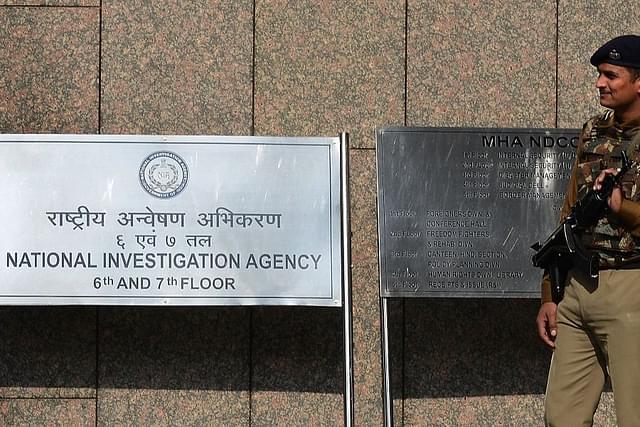News Brief
Reasi Attack Investigation Update: Key Suspect's Leads Prompt NIA Searches In Jammu and Kashmir's Rajouri

The office of the National Investigation Agency (NIA) in New Delhi (MONEY SHARMA/AFP/Getty Images)
The National Investigation Agency (NIA) has conducted multiple searches in the Rajouri district of Jammu and Kashmir on Sunday (30 June) in connection with the Reasi terrorist attack, which resulted in nine fatalities, including that of a child.
The attack occurred on 9 June in the Pouni area of Reasi district, where terrorists opened fire on a bus carrying pilgrims from Shiv Khori to Katra, causing the vehicle to plunge into a gorge.
Following directives from the Ministry of Home Affairs, the NIA took over the case on 15 June.
The raids in Rajouri were based on leads provided by Hakam Khan aka Hakin Din, a key suspect arrested on 19 June in connection with the Reasi terror attack.
According to Mohita Sharma, Senior Superintendent of Police (SSP) in Reasi, Din not only harboured the attackers but also facilitated their movements and actions leading up to the deadly incident.
"The arrested person is a prime militant associate who helped the terrorists in the execution of the attack. Further interrogation and investigation of the case is ongoing," she added.
During questioning, Din disclosed that three terrorists were staying at his house, and the terrorists paid him Rs 6,000, which has been recovered from him.
Jammu and Kashmir experienced a series of terror attacks in June, prompting Prime Minister Narendra Modi and Union Home Minister Amit Shah to review the security situation in the union territory.
Prime Minister Modi also has stated that the government is "seriously" concerned about the recent terror attacks and will make every effort to deal with the country's enemies.
Support Swarajya's 50 Ground Reports Project & Sponsor A Story
Every general election Swarajya does a 50 ground reports project.
Aimed only at serious readers and those who appreciate the nuances of political undercurrents, the project provides a sense of India's electoral landscape. As you know, these reports are produced after considerable investment of travel, time and effort on the ground.
This time too we've kicked off the project in style and have covered over 30 constituencies already. If you're someone who appreciates such work and have enjoyed our coverage please consider sponsoring a ground report for just Rs 2999 to Rs 19,999 - it goes a long way in helping us produce more quality reportage.
You can also back this project by becoming a subscriber for as little as Rs 999 - so do click on this links and choose a plan that suits you and back us.
Click below to contribute.
Latest